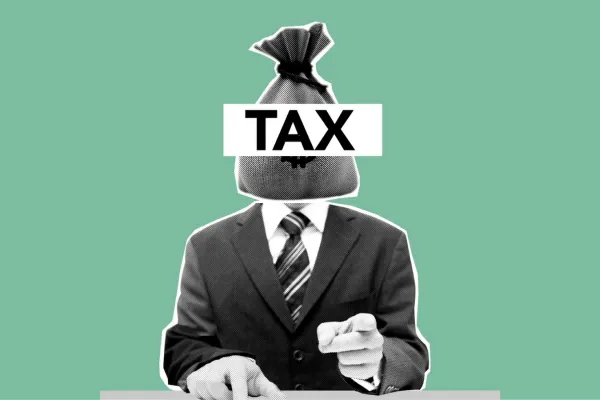Frequently Asked Questions
Blog

Self-Employment Taxes for Active Limited Partners
When do limited partners have to pay self-employment taxes on their distributive share of partnership income?
Although limited partnerships have been around for decades, there has never been a definitive answer to this question. But we’re getting close. The IRS and the courts are trying to require active limited partners to pay selfemployment tax.
The Limited Partner Exception to Self-Employment Taxes
Self-employment taxes are substantial, and most people want to minimize them. They consist of a 12.4 percent Social Security tax up to an annual income ceiling adjusted for inflation each year ($168,600 for 2024) and a 2.9 percent Medicare tax on all self-employment income (i.e., net earnings from self-employment). Thus, the tax is 15.3 percent up to the ceiling and 2.9 percent thereafter
If net earnings from self-employment are over $200,000 for single taxpayers, or $250,000 for those who are married filing jointly, self-employed taxpayers must pay a 0.9 percent additional Medicare tax on net earnings from self-employment over the applicable threshold, for a total 3.8 percent Medicare tax on all net earnings from selfemployment over the threshold.1 General partners always have to pay self-employment taxes on their distributive share of the ordinary income earned from the partnership’s business.
General partners must also pay self-employment tax on any guaranteed payments they receive for services rendered to the partnership.
The rules differ for limited partnerships. Limited partnerships are entities created under state partnership laws that contain two classes of partners:
General partners who are personally liable for partnership debts and manage the business
Limited partners whose personal liability for partnership debts is limited to the amount of money or other property they contribute
General partners in limited partnerships must pay self-employment taxes on their distributive share of limited partnership profits, the same as in a general partnership. Guaranteed payments to limited partners are also subject to self-employment tax.
Salary and professional fees paid to limited partners for services performed for the partnership are included in computing the limited partners’ net earnings from self-employment. But partnerships are not required to make guaranteed payments to partners. The concept of “reasonable compensation” does not exist for partnerships and partners in the same way that it does for S corporations and shareholders.
Moreover, limited partners need not pay any self-employment tax on their distributive share of the partnership’s profits. Such profits are subject only to the income tax.
When the tax code section regarding limited partnerships and self-employment taxes was enacted in the 1970s, state limited partnership laws all required limited partners to refrain from taking an active role in the partnership business. Active limited partners could lose their limited liability and become personally liable for partnership debts.
But in 2001, the Revised Uniform Limited Partnership Act (a model law enacted in whole or in part by many states) eliminated this control rule, bringing limited partners into parity with LLC members and corporate shareholders.
Since 2001, about 25 states have amended their limited partnership laws to permit limited partners to participate in the partnership business to varying degrees without losing their limited liability.
For example, Delaware’s limited partnership law provides that limited partners may work for Delaware limited partnerships as independent contractors or employees without losing their limited liability.
Does this mean that in states such as Delaware, limited partners can work for the partnership and avoid paying self-employment tax on their share of the partnership income? High-earning limited partners—hedge fund managers, for example—could save substantial tax if this were the case.
In the past, it probably would have been. But a recent precedential decision by the U.S. Tax Court has held that the answer to this question is “no.”8
Soroban Capital Partners LP v Commissioner
Soroban Capital Partners LP, an investment firm, was a former Delaware LLC that converted to a limited partnership under Delaware law. For federal income tax purposes there were three limited partners, all of whom performed services for the partnership as independent contractors.
The limited partners received guaranteed payments of about $2 million per year for their services that were subject to self-employment tax. But the limited partners excluded their distributive shares of partnership income from selfemployment tax.
The IRS challenged Soroban Capital’s position that the limited partners qualified for the limited partnership exclusion from self-employment tax, and proposed adjustments to include their full distributive shares in the partnership’s net earnings from self-employment. The IRS won in the Tax Court, which granted the agency’s motion for summary judgment.
The Tax Court rejected Soroban Capital’s argument that the limited partners’ distributive shares of partnership income must be excluded from net earnings from self-employment solely due to their status as limited partners under Delaware state law.
The federal tax code contains no definition of “limited partner.” It merely provides that “a limited partner, as such,” need not pay self-employment tax on his or her distributive share of partnership income.9
The Tax Court focused on the “as such” language in the statute and legislative history. When the exclusion from self-employment tax for limited partners was adopted in 1977, it was generally understood that limited partners were passive investors, not active participants in the partnership business. The original purpose for the exclusion was to prevent passive investors from receiving credits for Social Security coverage.
Thus, qualifying as a limited partner under state law is not sufficient by itself to avoid self-employment tax. Rather, a functional analysis is required to determine whether a limited partner is a passive investor or an active participant in the business. Only limited partners who are passive investors are excluded from self-employment tax.
The court also held that a functional inquiry into the roles of individual partners is a partnership item appropriately determined in a Tax Equity and Fiscal Responsibility Act partnership-level proceeding.
Who Is a Limited Partner?
Unfortunately, the Tax Court in Soroban did not provide any guidance on how to implement a functional analysis of partners’ roles and responsibilities to determine whether they are passive investors. Presumably, this issue will be addressed in future litigation.
But under the functional analysis adopted by the Tax Court in previous cases, courts look at the relationship of the partner to the entity’s business and the nature of the services the partner provides to the entity’s operations. For the self-employment tax exemption to apply, “an owner must not participate actively in the entity’s business operations and must have protection from the entity’s obligations.”10
In 1997, the IRS promulgated proposed regulations providing that a partner would not be a limited partner for purposes of the self-employment tax exclusion if that partner
was personally liable for partnership debts because of his or her partner status,
could contract on behalf of the partnership, or
participated in the partnership’s activities for more than 500 hours in a taxable year.
The partners in Soroban Capital would not have qualified as limited partners under these regulations because they worked over 2,000 hours for the partnership.
The proposed regulations were heavily criticized by Congress and others and never finalized by the IRS. The IRS has prioritized the issuance of new regulations on this issue. An IRS official recently said that the agency is now in the process of drafting new regulations and that the IRS would require a functional analysis for determining whether a person is a limited partner.
It is unclear when the new regulations will be issued, but the favorable ruling in Soroban may encourage the IRS to complete its rule-making process sooner rather than later. It may also encourage the agency to conduct more selfemployment audits of limited partnerships.
The Partnership Form Is Not a Way to Avoid Self-Employment Taxes
The Soroban decision is the latest in a series of cases involving self-employment taxes for partnership-like entities that the IRS has won. These cases involved a state limited liability partnership,13 a limited liability company taxed as a partnership,and a professional limited liability company.
In all of these cases, the Tax Court held that business owners qualify for the limited partner exclusion from selfemployment tax only if they are passive investors who don’t actively participate in the entity’s business. The Soroban decision is the first case in which the court has ruled on the exclusion for limited partnerships themselves.
It’s now becoming abundantly clear that business owners who want to both (1) actively participate in their business, and (2) avoid paying self-employment taxes should not rely on the self-employment tax exclusion for limited partners.
The only reliable way to avoid self-employment taxes is to form an S corporation (or an LLC taxed as an S corporation). The distributions from the S corporation are not subject to self-employment tax. But of course, Social Security and Medicare tax must be paid on the shareholder-employee compensation (which must be reasonable based on the services the individual provides).
Takeaways
The tax code provides that limited partners “as such” don’t have to pay self-employment tax on their distributive share of partnership income—a substantial tax savings.
For the first time, the Tax Court has held in a precedential decision that qualifying as a limited partner under the applicable state partnership law is not enough by itself to come within the limited partner exception to self-employment tax.
The Tax Court ruled that the limited partner exception to self-employment taxes applies only to limited partners who are passive investors, not to those who are actively involved in the partnership business. But the court did not provide any clear guidelines for determining when a limited partner is too active to be eligible for the exception.
The limited partner exception to self-employment taxes is a high-priority item for the IRS, which is in the process of drafting regulations that will require a functional analysis for determining whether a person is a limited partner.
Follow me on Instagram, LinkedIn and Youtube Check out my website.
Matt Bontrager


We help Investors & Entrepreneurs pay less taxes.
© TrueBooks CPA All rights reserved.

